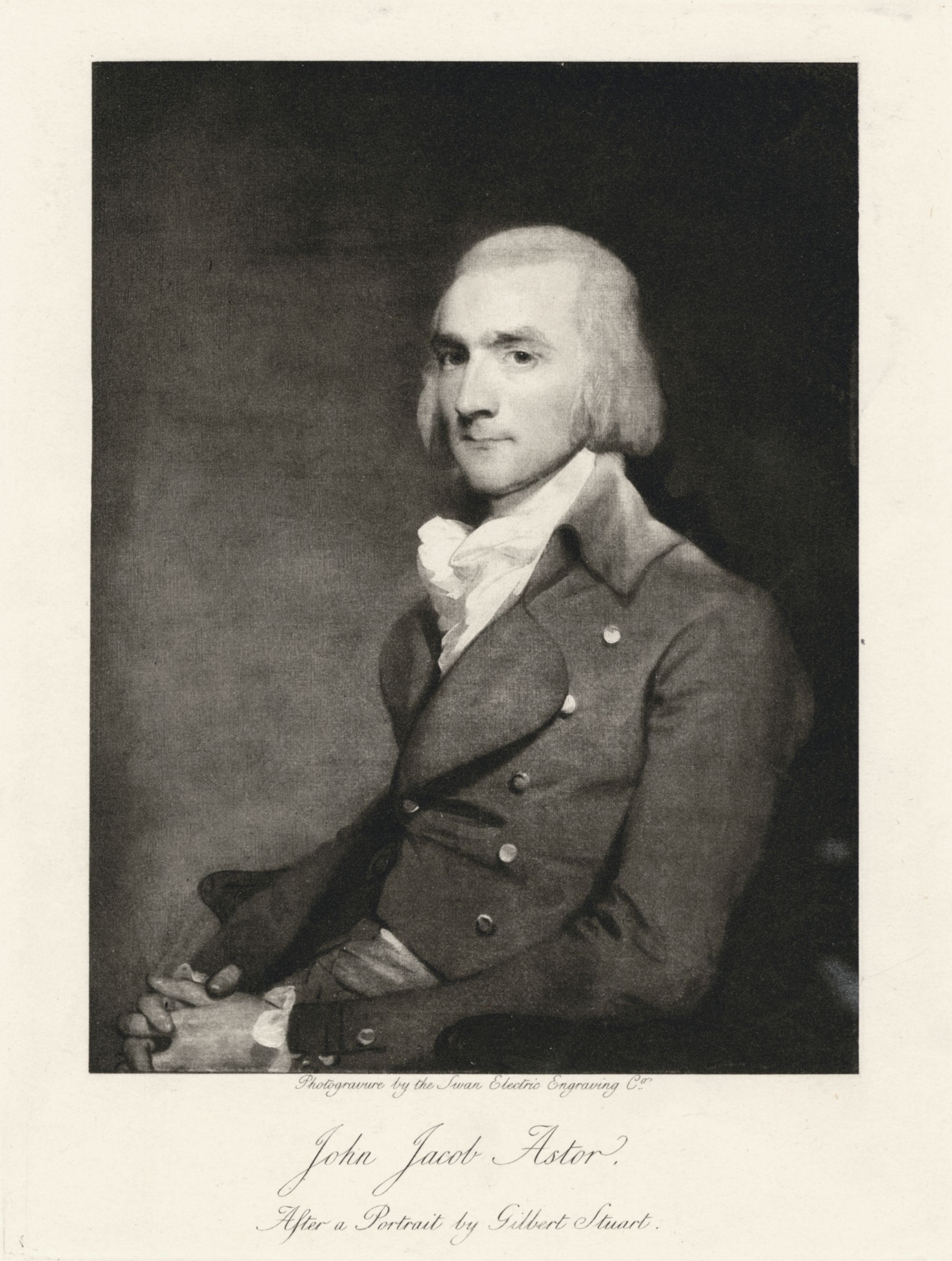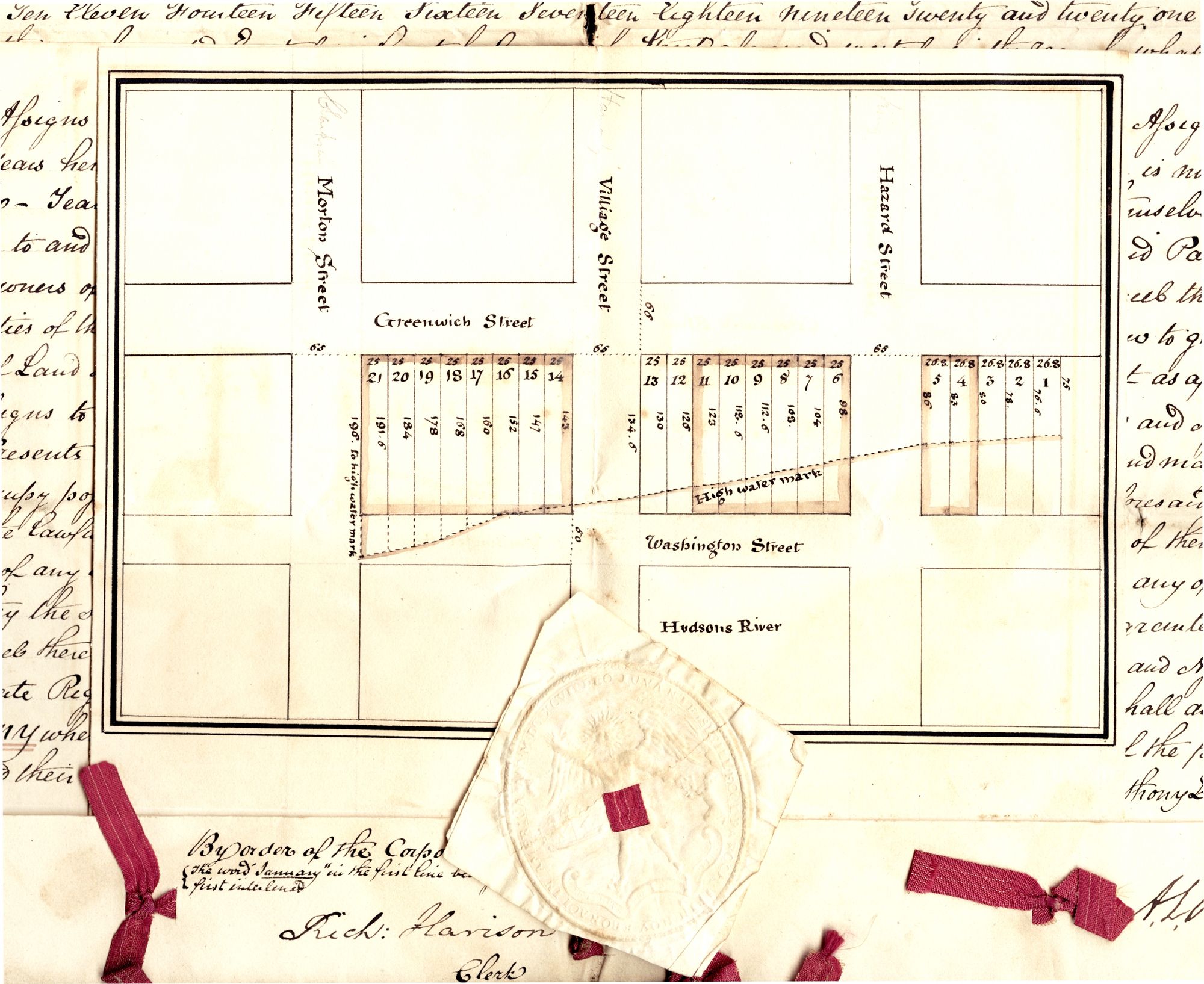NYC’s Forgotten ‘War on Christmas Trees’
Discover how an obscure holiday crackdown affects festive street vendors today!


Map of lots of land from deed sold by John Jacob Astor to Gilbert Coutant at the corner of Bowery, Art Street, and Lafayette Place in 1828. (MS 25, Astor Family Papers.) Image via New-York Historical Society.
Astor Place. Astoria, Queens, the Waldorf-Astoria Hotel. Pretty much anything in New York with A-S-T-O-R in its name is tied to this 19th Century real estate mogul’s estate.
According to the New York Historical Society’s blog, John Jacob Astor arrived to New York in the late eighteenth century. In the typical “rags to riches” scenario, Astor began working in the fur trading industry, and soon enough, he owned a successful store. After building his fortune, the astute businessman began to dabble in New York City real estate.

Portrait of John Jacob Astor by Gilbert Stuart, published by William Waldorf Astor, 1899. PR 52 Portrait File. Image via New-York Historical Society.
Astor had a knack for seeing potential profit in land plots which seemed dead. Astor bought huge chunks of land cheaply, and would then lock his tenants into long term leases. In fact, by the late nineteenth century, the Astor family was known as the “landlords of New York.”
Astor must have seen very far into the future, then, when he invested in what is now the Greenwich Village and the Meatpacking District.
While researching buildings in our vintage photography post on the Meatpacking, we came across this landmarking document for the Gansevoort Market Historic District. The ownership history of each building is listed and John Jacob Astor comes up an amazingly large number of buildings. In fact, the name Astor is written 185 times just in this document. But this isn’t at all surprising considered the Astors owned all of Washington Street, parts of Little West 12th and more. He sold property to his colleague as well, but kept it in the family, as he was the husband of his sister.
According to Forgotten New York, people started living in tenements in the Meatpacking District in order to escape epidemics in the more central areas of New York. Once the Hudson River Railroad was built in the area, a successful farmers market emerged, which of course added significantly to the Astor Family’s wealth. By 1886, the city declared this a public market to get a cut of the profits!
Astor also acquired Greenwich Village through a deal with Aaron Burr. Burr needed quick cash after his famous duel which killed Alexander Hamilton. Astor lent him the money in exchange for Burr’s property which is now Greenwich Village. Check out a map of the property, below.

Map of lots of land from deed purchased by John Jacob Astor from the Protestant Episcopal Church between Greenwich and Washington Streets in 1806. (MS 25, Astor Family Papers.) Image via New-York Historical Society.
For more reading on NYC’s rich history, look here about how street names have changed over the years. Also, check out our New York Historical Society tag.
Subscribe to our newsletter